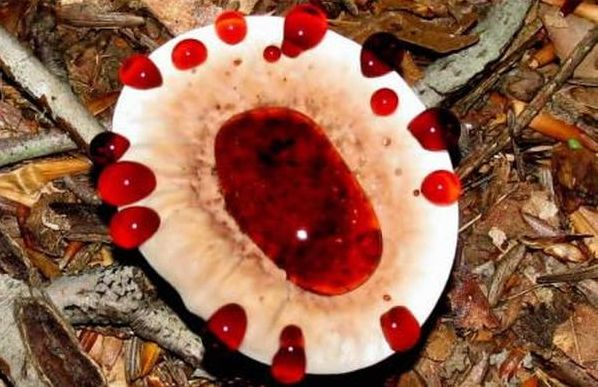|
|
Hydnellum Peckii Fungus
|
Ecology
Hydnellum peckii is a mycorrhizal fungus, and as such establishes a mutualistic relationship with the roots of certain trees (referred to as "hosts"), in which the fungus exchanges minerals and amino acids extracted from the soil for fixed carbon from the host. The subterranean hyphae of the fungus grow a sheath of tissue around the rootlets of a broad range of tree species, in an intimate association that is especially beneficial to the host (termed ectomycorrhizal), as the fungus produces enzymes that mineralize organic compounds and facilitate the transfer of nutrients to the tree.
The ectomycorrhizal structures of H. peckii are among a few in the Bankeraceae that have been studied in detail. They are characterized by a plectenchymatous mantle—a layer of tissue made of hyphae tightly arranged in a parallel orientation, or palisade, and which rarely branch or overlap each other. These hyphae, along with adhering mineral soil particles, are embedded in a gelatinous matrix. The hyphae of the ectomycorrhizae can become chlamydospores, an adaptation that helps the fungus tolerate unfavorable conditions. Chlamydospores of H. peckii have a peculiar structure—markedly distinct from those of other Bankeraceae—with thick, smooth inner walls and an outer wall that is split radially into warts. The most striking characteristic of the ectomycorrhizae as a whole is the way the black outer layers of older sections are shed, giving a "carbonized appearance". The majority of the underground biomass of the fungus is concentrated near the surface, most likely as "mycelial mats"—dense clusters of ectomycorrhizae and mycelium. The mycelium is also known to extend far beyond the site of the fruit bodies, as far as 337 centimeters (11.1 ft) away.
|
|









